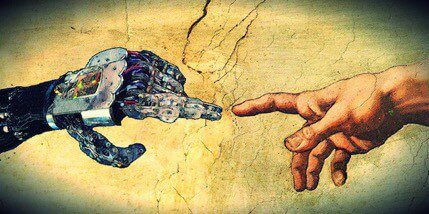The art world is undergoing a profound transformation, driven by rapid technological advancements and significant social changes. These shifts are not only altering how art is made and experienced but are also reshaping the philosophical underpinnings of what art can be. Here’s how technology and social change are forging new paths in the art world.
Technology: Expanding the Boundaries of Art
1. Digital and Interactive Art: The rise of digital technology has given birth to new art forms such as digital painting, 3D printing, and interactive art installations, which allow viewers to engage with art in dynamic ways. For instance, augmented reality (AR) and virtual reality (VR) are being used to create immersive experiences that blend the real with the virtual. Artists like Olafur Eliasson have explored AR to enhance physical environments with digital elements, inviting viewers to reconsider their perceptions of space and reality.
2. AI and Machine Learning: Artists are increasingly incorporating artificial intelligence (AI) into their work. AI algorithms can analyze vast amounts of data and generate new visual patterns, compositions, and even predict artistic trends. This not only pushes the boundaries of creativity but also raises questions about the role of the artist in the age of machines.
3. NFTs and Blockchain: The recent explosion of non-fungible tokens (NFTs) has revolutionized the art market, providing artists with new ways to monetize their work and ensuring authenticity and ownership through blockchain technology. This has opened up a global market for digital art, attracting a new generation of collectors.
Social Change: Reflecting Contemporary Issues
1. Art as Social Commentary: Contemporary artists are increasingly using their platforms to comment on and engage with social issues such as climate change, racial injustice, and gender equality. Artworks addressing these topics not only raise awareness but also foster community dialogue and inspire action. For example, Ai Weiwei’s installations often critique government policies and social injustices, resonating on a global scale.
2. Inclusivity and Diversity: There’s a growing movement within the art world to include more diverse voices that have historically been marginalized. This includes not only artists of different ethnic backgrounds but also those who identify with a variety of gender expressions and sexual orientations. Museums and galleries are reevaluating their collections and exhibition practices to reflect a broader spectrum of human experiences.
3. Decentralization of Art Spaces: The traditional gatekeeping roles of major art institutions are being challenged by online platforms and social media, which democratize access to art. Artists can now bypass traditional galleries and directly connect with audiences worldwide, fundamentally altering the art distribution system and empowering artists.
Conclusion
The evolution of art driven by technology and social change is not just reshaping the industry’s structure and the market; it’s also deeply influencing the cultural relevance of art. As artists adapt and respond to these changes, they not only reflect our current society but also imagine the future landscapes of creativity. The intersection of art with cutting-edge technology and pressing social issues ensures that it remains a vital, evolving form of human expression that continues to challenge, delight, and inspire.






















